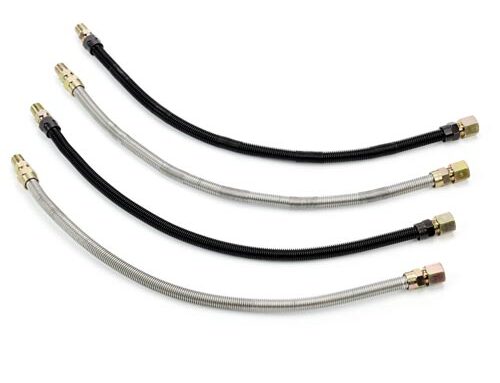At HPC Fire Inspired safety and manufacturing processes are at the fore front of all our innovations. Our teams takes special care ensuring every aspect of our designs function optimally. Sealing gas pipe threads is a critical step that ensures the safety and integrity of our gas piping systems as well as the valve train components. Proper sealing of gas pipe threads prevents leaks and enhances the overall reliability of the system. In this tech talk, HPC will highlight products that are best used for sealing gas pipe lines.
Pipe Dope (Pipe Joint Compound)
The most common and widely used pipe thread sealant is pipe dope, or pipe joint compound. It is a paste-like substance applied to the threads before connecting pipes. Pipe dope provides a reliable seal and is particularly useful in applications where vibration may occur. It comes in various formulations, and it is important to choose one that is explicitly designed for gas lines. It is meant for metal-to-metal threads. To use pipe dope (joint compound) simply apply an even coating onto the end threads of the male pipe thread, using the applicator brush or finger. Once applied, simply tighten threads together. When using pipe dope on low pressure gas lines there is no cure time the seal is complete immediately.
Teflon Tape (PTFE Tape)
Teflon tape, also known as PTFE tape, is a widely used material for sealing pipe threads. There are a few different types of Teflon tape and It is crucial to select the correct type for gas piping. Yellow Teflon tape is specifically designed for gas lines, white Teflon tape is designed for water piping. The tape should be wrapped around the male threads in the direction of the threads to establish an effective seal. Teflon tape is known for its ease of use and affordability making it the most commonly form of thread sealant used by consumers.

Thread Sealant (Pipe Thread Sealant with PTFE)
HPC Fire Inspired chooses to utilize this product in our in house manufacturing process. Similar to pipe dope, thread sealant comes in liquid or gel form and is applied to the male threads. It is crucial to select a thread sealant approved for gas lines and compatible with the materials in the piping system. Thread sealants often provide a secure and long-lasting seal, making them suitable for various gas line applications. Application is as simple as applying a small amount approximately two threads down to the male pipe thread. Then tighten the joints together. This particular type of sealant will cure in the absence of air between the threads within 24 hours. The curing process keeps the sealant malleable between the threads. HPC uses this type of sealant because of its ability to prevent loosening and leakage from shock and vibration during the shipping process guaranteeing the seal will withstand over long term usage.
Summary
It is always important to follow the manufacturer’s instructions and guidelines when applying any sealing product. Additionally, it’s essential to comply with local building codes and regulations related to gas piping to ensure safety and proper installation. It is best to consult with a professional plumber or gas technician for to ensure proper installation. As a final safety check, it is important to verify that all connections are sealed and tightened. Performing a leak check on the gas line and any fittings will confirm proper assembly.
BONUS TECH TIP:
The above material is important for sealing NPT (NATIONAL PIPE THREAD) tapered threads. NEVER APPLY PIPE DOPE OR ANY OTHER TYPE OF THREAD SEALANT TO A FLARE FITTING
If you have any questions or concerns, please give us a call at
937-436-9800. Let our NFI certified technicians provide guidance around all your fire design needs.
Looking to learn more about HPC’s Offerings? Schedule an online or in person training with Chuck Parsons, HPC’s training and education manager.










